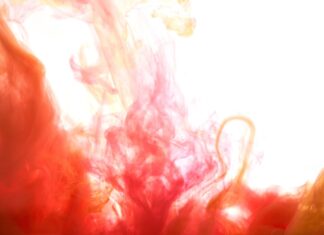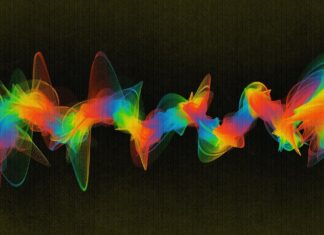In the realm of professional settings, the significance of Business Professional Attire cannot be overstated. The way individuals present themselves in a corporate environment plays a pivotal role in shaping perceptions, instilling confidence, and fostering a sense of competence. Business Professional Attire encompasses a specific dress code that reflects a level of formality, attention to detail, and adherence to industry norms. This comprehensive exploration will delve into the nuances of Business Professional Attire, examining its various components, evolving trends, and the impact it has on professional success. Additionally, when accessorizing your business professional attire, consider investing in a quality leather briefcase for a polished and organized look; sites like Stridewise offer insightful reviews to help you choose the perfect one for your needs.
The term Business Professional Attire refers to a formal style of dressing that is commonly adopted in corporate and professional environments. It goes beyond merely covering the body; it is a visual language that communicates professionalism, competence, and a commitment to the conventions of the business world. This attire is often characterized by a harmonious blend of classic styles, conservative colors, and well-tailored pieces, creating a polished and sophisticated look.
Within the spectrum of Business Professional Attire, the choice of clothing is not arbitrary but follows established norms that vary across industries and organizations. For men, this typically includes a tailored suit, dress shirt, and a conservative tie. Women often opt for tailored suits, dresses, blouses, and skirts or pants that adhere to a professional and modest aesthetic. The emphasis is on presenting a cohesive and neat appearance, with attention to grooming and accessories playing a complementary role.
The first impression is a lasting impression, and Business Professional Attire serves as the initial visual cue that individuals project in professional interactions. The impact of a well-chosen ensemble extends beyond aesthetics; it conveys a sense of seriousness, respect for the workplace, and an understanding of professional expectations. In a world where non-verbal communication plays a crucial role, business professionals leverage their attire as a tool to communicate competence and credibility.
For many, the concept of Business Professional Attire extends beyond a mere dress code; it embodies a mindset of professionalism and a commitment to excellence. In environments where client interactions, presentations, and boardroom meetings are the norm, the way one presents themselves through clothing becomes a tangible expression of their dedication to their role and responsibilities. As a result, the adoption of Business Professional Attire becomes not just a requirement but a strategic choice in cultivating a professional identity.
Navigating the Components of Business Professional Attire
The components of Business Professional Attire are designed to create a cohesive and polished look that aligns with the formal expectations of professional settings. Understanding these components is essential for individuals seeking to navigate the nuances of business dress codes successfully.
Suits for Men and Women:
At the core of Business Professional Attire is the classic suit, a staple for both men and women. For men, this typically includes a tailored jacket and trousers made from matching fabric. The choice of colors leans towards conservative hues such as navy, charcoal, or black. Women’s suits may comprise a jacket with either a skirt or pants, and the choice of blouse or shirt adds a touch of versatility. The fit is crucial, with tailoring ensuring that the suit complements the wearer’s physique.
Shirts and Blouses:
The choice of shirts or blouses plays a pivotal role in completing the Business Professional Attire ensemble. For men, a crisp, long-sleeved dress shirt is a standard choice, often paired with a conservative tie. Women may opt for blouses with tailored necklines or classic button-down shirts. The emphasis is on maintaining a neat and well-ironed appearance, projecting an image of attention to detail.
Ties and Accessories:
Ties are a quintessential accessory for men in Business Professional Attire. The selection often leans towards conservative patterns and colors that complement the suit. In contrast, women may choose accessories such as scarves or understated jewelry to enhance their ensemble. The key is to strike a balance between accessorizing and maintaining a professional, non-distracting appearance.
Footwear:
Shoes are a crucial element in completing the Business Professional look. For both men and women, closed-toe shoes in neutral colors are typically preferred. Classic styles such as oxfords, loafers, or heels contribute to a polished appearance. Shoes should be well-maintained and match the formality of the overall ensemble.
Hosiery and Socks:
Attention to detail extends to hosiery and socks. Neutral-colored stockings or socks that match the color of the suit or trousers contribute to a cohesive look. This small detail may seem minor, but it underscores the commitment to presenting a well-coordinated and intentional appearance.
Grooming and Personal Care:
Grooming is an integral part of Business Professional Attire. Well-maintained hair, clean and trimmed nails, and subtle cologne or perfume all contribute to an overall professional image. Minimalistic makeup for women and a clean-shaven or neatly groomed beard for men are generally considered standard.
Briefcases and Bags:
Completing the Business Professional look often involves a thoughtfully chosen briefcase or bag. Leather options in classic colors are popular choices. The goal is to select a bag that is both functional and aligns with the overall aesthetic of the attire.
Understanding Industry Variations:
While there are foundational principles for Business Professional Attire, variations exist based on industry norms. For example, the dress code in finance or law may be more conservative, with a preference for traditional suits. In contrast, industries like tech or creative fields may allow for more flexibility, permitting a smart-casual interpretation of Business Professional Attire.
Evolving Trends in Business Professional Attire
The landscape of Business Professional Attire is not static; it evolves to reflect societal shifts, cultural influences, and changing perceptions of professionalism. In recent years, several trends have emerged, challenging traditional notions while still adhering to the core principles of formality and professionalism.
Inclusive Dress Codes:
There is a growing recognition of the need for inclusive dress codes that accommodate diverse cultural backgrounds, gender expressions, and personal preferences. Companies are reevaluating their dress policies to foster a sense of belonging and diversity in the workplace. This inclusivity may manifest in the acceptance of cultural attire or more flexible interpretations of Business Professional Attire.
Casual-Friday Influence:
The influence of casual-Friday culture has permeated into Business Professional Attire, especially in industries with a more relaxed dress code. The concept of ‘business casual’ has evolved, allowing for a more comfortable yet still professional appearance. This may include options like polo shirts, khakis, or more relaxed footwear.
Tech-Industry Influence:
The rise of the tech industry has brought about a shift in the traditional understanding of Business Professional Attire. Tech companies, known for their more casual work environments, have influenced a more relaxed approach to dressing professionally. The prevalence of tech-casual attire, such as jeans and a collared shirt, is becoming more acceptable in certain professional settings.
Emphasis on Sustainability:
With a growing awareness of environmental issues, there is a trend toward sustainable and ethical fashion in Business Professional Attire. Companies and individuals are increasingly mindful of the environmental impact of clothing choices, opting for eco-friendly materials, ethical production practices, and longevity in wardrobe selections.
Remote Work Influence:
The rise of remote work has led to a reevaluation of traditional Business Professional Attire. With more professionals working from home, there is a shift towards a blend of comfort and professionalism. This may include the adoption of ‘business on top, casual on the bottom’ for virtual meetings or a more relaxed interpretation of business attire when not physically present in the office.
Best Practices for Navigating Business Professional Attire
Navigating the landscape of Business Professional Attire requires a nuanced understanding of industry expectations, personal preferences, and evolving trends. The following best practices serve as a guide for individuals seeking to present a polished and professional image in the workplace:
Know Your Industry Norms:
Understanding the specific dress norms of your industry is paramount. Different professions and sectors may have varying expectations for Business Professional Attire. Research and observe what is considered standard in your field to ensure that your attire aligns with industry norms.
Prioritize Fit and Tailoring:
The fit of your clothing is crucial in Business Professional Attire. Ill-fitting attire can undermine the overall polished look. Invest in tailoring to ensure that suits, shirts, and dresses are customized to your body shape, creating a silhouette that exudes professionalism.
Embrace Timeless Styles:
While trends may come and go, timeless styles endure in Business Professional Attire. Opt for classic colors, well-tailored pieces, and accessories that stand the test of time. This not only ensures a sophisticated appearance but also minimizes the need for frequent wardrobe updates.
Accessorize Thoughtfully:
Accessories play a subtle yet significant role in Business Professional Attire. Choose accessories that complement your outfit without being distracting. A classic watch, simple jewelry, and a well-chosen tie or scarf can enhance your professional image without overpowering the overall look.
Consider Cultural Sensitivities:
In a globalized workforce, it’s essential to be mindful of cultural sensitivities when navigating Business Professional Attire. Some cultures may have specific expectations regarding modesty, colors, or traditional attire. Respect and awareness of these cultural nuances contribute to a more inclusive workplace.
Maintain Grooming Standards:
Grooming standards are an integral part of Business Professional Attire. Regular haircuts, well-groomed facial hair, and attention to personal hygiene contribute to a polished appearance. A clean and professional look communicates a sense of responsibility and respect for the professional environment.
Invest in Quality Pieces:
Quality over quantity is a guiding principle in Business Professional Attire. Invest in well-made, durable pieces that withstand regular wear. Quality fabrics and craftsmanship not only contribute to a refined appearance but also ensure that your wardrobe endures over time.
Adapt to the Occasion:
Business Professional Attire is adaptable, and understanding the context of different professional occasions is essential. The level of formality may vary for client meetings, job interviews, or industry conferences. Tailor your attire to the specific occasion to strike the right balance between professionalism and situational appropriateness.
In conclusion, Business Professional Attire is more than a dress code; it is a language of professionalism and competence. The way individuals present themselves in a professional setting contributes to the overall culture of the workplace and influences perceptions. By navigating the components of Business Professional Attire, staying attuned to evolving trends, and adhering to best practices, individuals can cultivate a polished and confident image that aligns with the expectations of the professional world.






















